Have you ever seen your furry buddy scratching like they’re auditioning for a “Dancing with the Fleas” show? Or maybe you’ve spotted an unexpected rash or a tiny bump that made you wonder if your pup is growing a unicorn horn? Don’t worry—we’ve got your back! Let’s dive into the world of common dog skin conditions.
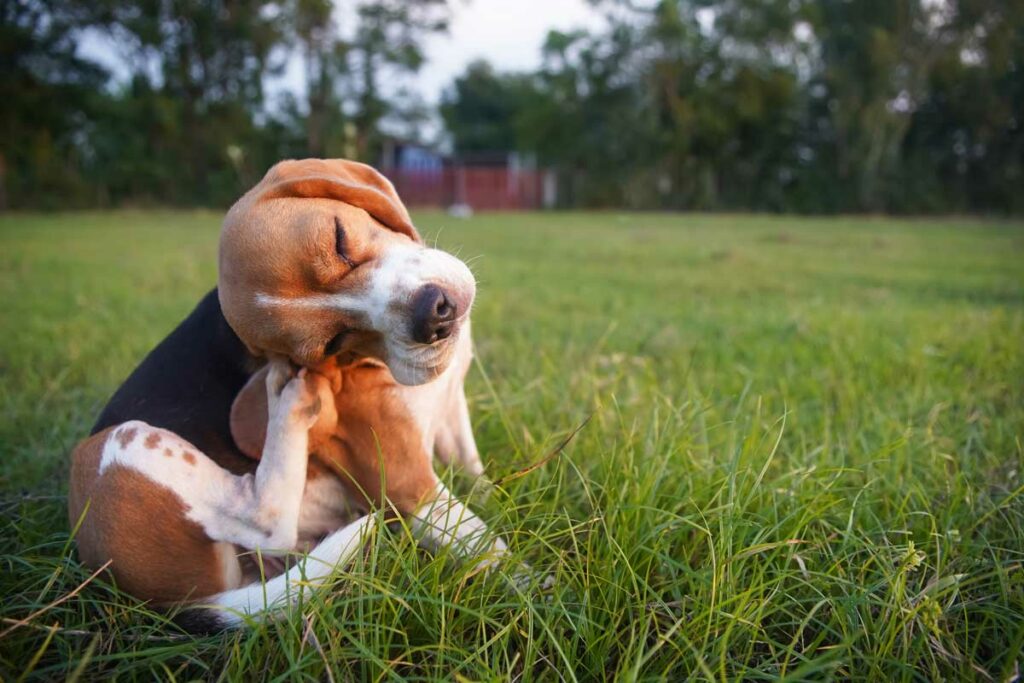
Cracking the Canine Skin Code
When it comes to our four-legged pals, skin troubles are a bit like surprise guests at a party. They can turn up unannounced and leave everyone scratching their heads—or, in this case, scratching their skin.
These issues can range from run-of-the-mill dry skin and pesky hot spots to dermatitis, allergies, and lumps. Symptoms often include unstoppable itching, redness, inflammation, and even some hair loss. Basically, it’s like a never-ending bad hair day for your pooch.
Dry Skin in Dogs
Dry skin in dogs can be a common hassle. It’s the canine equivalent of having flaky, itchy, and cranky skin. If your pup has been scratching like there’s no tomorrow, shedding tiny dandruff-like snowflakes, or seems super irritated (hello, excessive licking and gnawing), you might be dealing with a case of dry skin.
Now, just like humans, there’s a whole lineup of suspects behind this dry-skin caper. Blame it on low humidity, frequent baths with harsh shampoos, allergies, a not-so-great diet, or even some underlying medical issues like hypothyroidism.
Dry skin isn’t just about appearances; it’s genuinely uncomfortable for your doggo. So, if your furry buddy is scratching their way into next week, it’s time for an appointment with your vet. They’ll help you set up a skincare routine that’ll make your pup’s tail wag for all the right reasons.
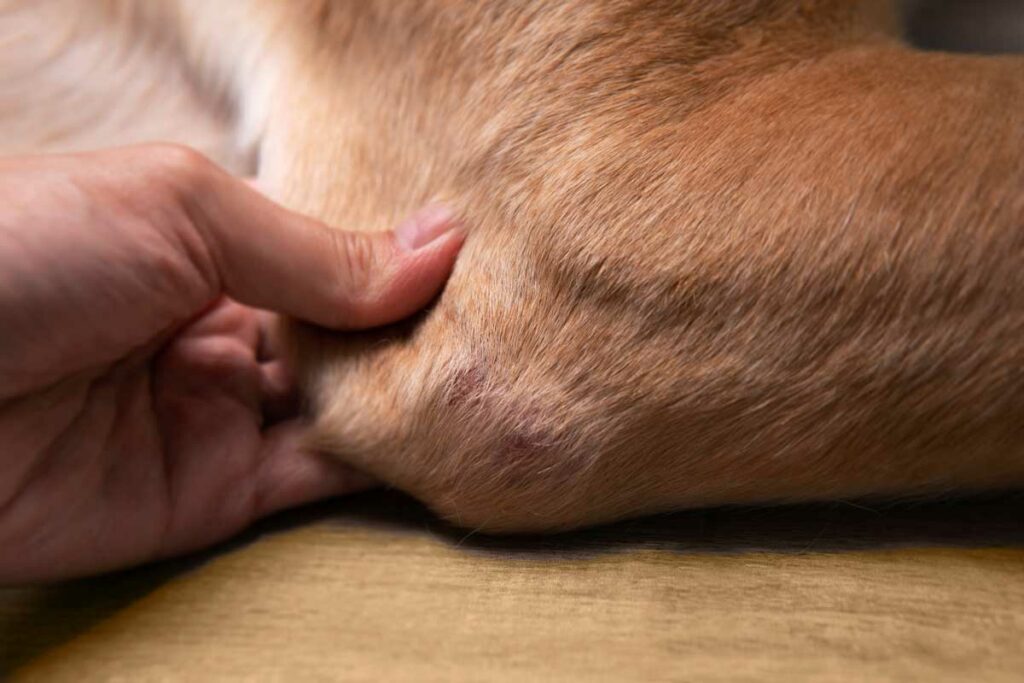
Dog Skin Allergies
Is your loyal sidekick allergic to something in their Friday night feast? Or is it the change of seasons turning your pup into an itching sensation?
Whether it’s food or environmental allergies, an allergy test can put an end to the guessing game and get you back to playing fetch.
Hot Spots
Hot spots—aka acute moist dermatitis—are like those unexpected guests who show up at your party, spill drinks everywhere, and leave a mess. These spots are not “hot” because they’re cool; they’re “hot” because they’re warm to the touch, inflamed, and often oozy.
It all starts innocently enough, maybe a tiny itch or a little irritation thanks to allergies or an annoying bug bite. But your dog can’t resist the urge to scratch, lick, or chew, turning that minor inconvenience into a full-blown, painful party crasher. The area becomes all moist, and that’s when bacteria decide to join in, making things worse.
Because hot spots are both the problem and the aftermath of more irritation, they create a never-ending cycle of discomfort for your fur baby. So, if you spot a hot spot, don’t waste time. Rush over to your vet. They’ll help you figure out the cause, treat the area, and give you tips to prevent future flare-ups.
Dog Dermatitis
Dermatitis is an inflammation of the skin triggered by a bunch of things: allergies, parasites, or even fungal and bacterial intruders.
Your dog might be biting, scratching, or licking themselves more than usual. You’ll often see red, inflamed skin—sometimes with bumps—and, in severe cases, even oozing sores.
Dermatitis varies from pup to pup, and there are different types to consider:
- Atopic Dermatitis: Triggered by environmental allergens
- Flea Allergy Dermatitis: Caused by—you guessed it—fleas
- Food Allergy Dermatitis: Happens when certain ingredients in your dog’s food don’t play nice with their skin
So, if your fur baby is making scratching a full-time gig, it’s time for a vet visit. Your vet will investigate the cause and come up with a treatment plan.
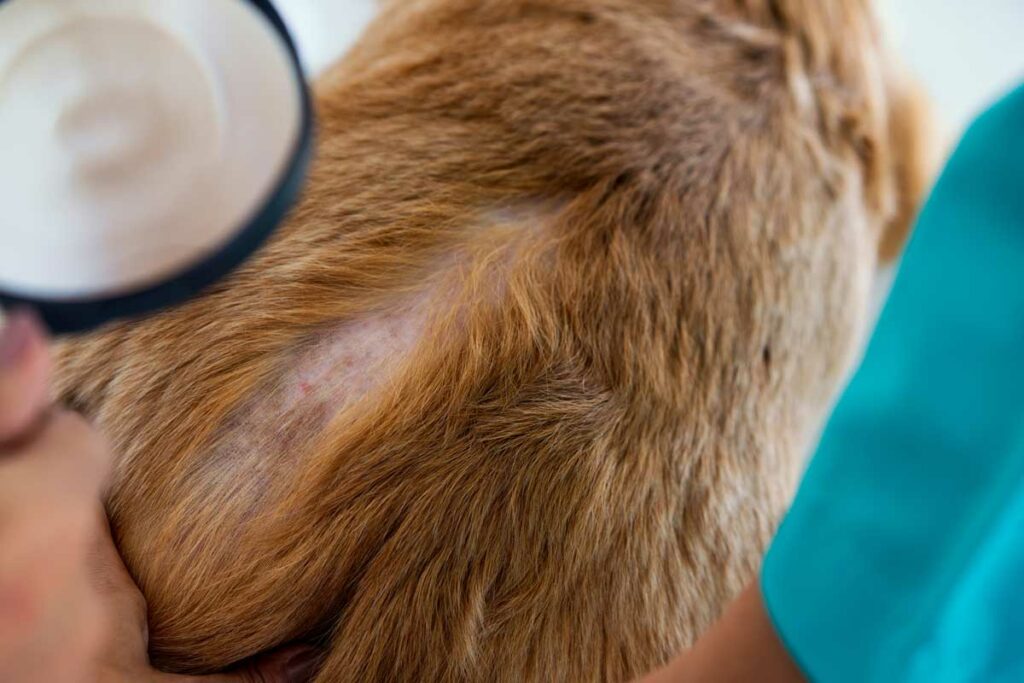
Fungal and Yeast Infections
Fungal and yeast infections on your dog’s skin show up when the skin isn’t in top-notch condition. This might be because of humidity, allergies, or maybe your dog isn’t the best at keeping up with their grooming sessions.
But don’t worry; your furry friend can kick these intruders out with antifungal creams or shampoos and maybe even a vet-prescribed potion.
Lumps and Bumps on Pets
As your furry friend grows older, you might spot some odd lumps and bumps on their skin. These little guys can be quite the puzzle for pet parents. Are they harmless or potential troublemakers?
- Friendly Bumps: Most of the time, these skin growths are the friendly kind, meaning they’re not out to cause trouble. These “friendly lumps” are non-cancerous and typically harmless. Think lipomas (fatty tumours), sebaceous cysts, warts, and skin tags. While they might not be life-threatening, they can sometimes cause discomfort or irritation. If one of these friendly lumps becomes inflamed or infected, just give your vet a call. They can easily remove them.
- Not-So-Friendly Lumps: On the flip side, some skin growths can be cause for concern. Skin cancer in dogs can take various forms, like melanoma, mast cell tumours, and squamous cell carcinoma. Early detection is crucial here; it can make a world of difference in treatment options and prognosis. Look out for red flags like speedy growth, colour changes, bleeding, ulcers, or lumps causing pain or discomfort for your pup.
Being the Skin Saver Your Pup Deserves
Just like us, what our dogs eat affects their skin. So, offer them a diet that’s not just tasty but packed with skin-loving nutrients.
Combine natural treats with a balanced diet suitable for your dog’s size and age, and you’re well on your way to healthy skin and a shining coat.
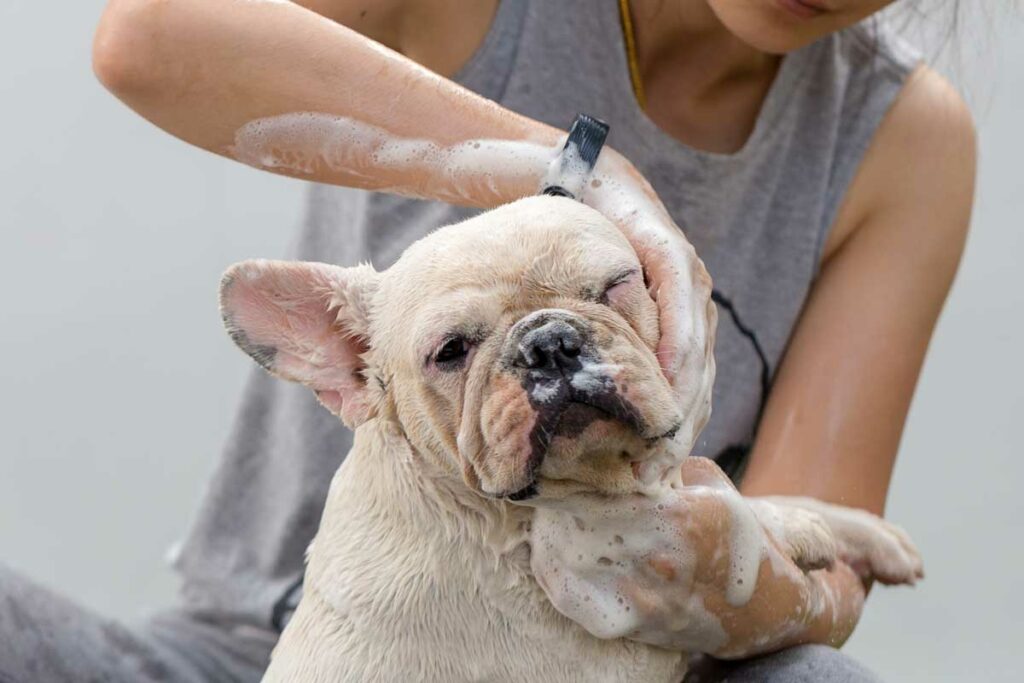
And finally, establish a regular bathing routine. Bath time might not be your dog’s idea of fun, but you can make it more enjoyable. Use natural shampoos and warm water, and master the art of canine massage. Make bath time a skin-rejuvenating experience for your pet, but remember, don’t overdo it. Your pup doesn’t want to lose those precious natural oils.
When In Doubt, Call the Vet
While these tips are helpful in your quest for answers about your dog’s skin health, nothing beats a vet’s wisdom. They can offer a professional diagnosis and treatment of dog skin conditions.
If your dog’s scratching is driving you both crazy or if a mysterious lump appears out of nowhere, reach out to your vet.
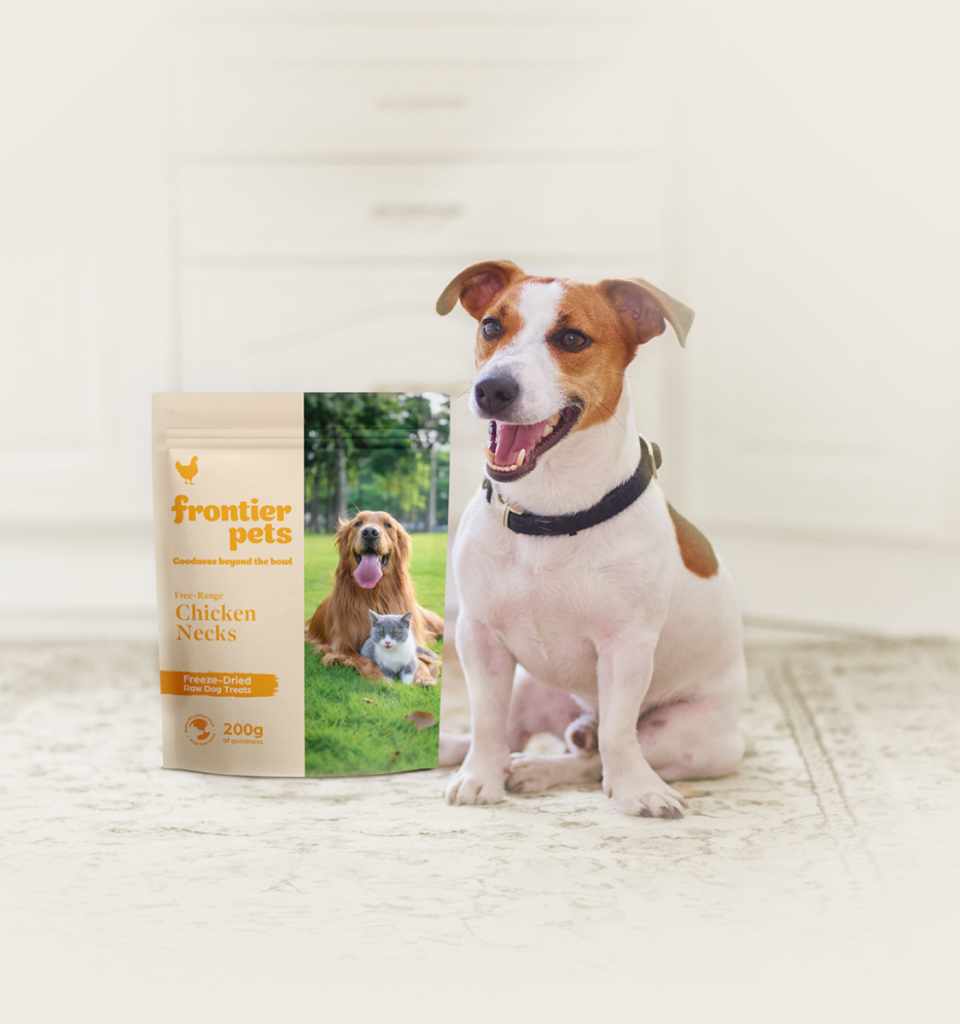
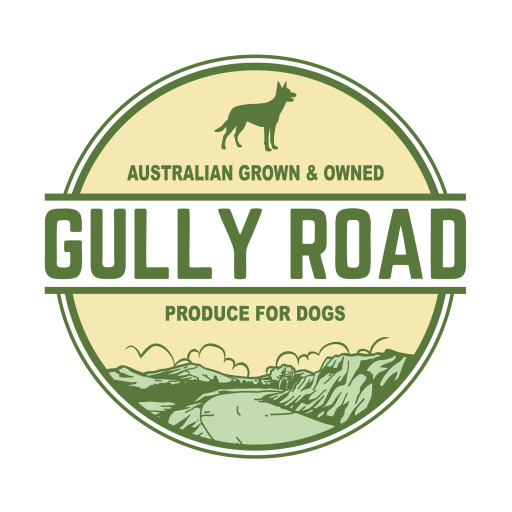

Leave a Reply